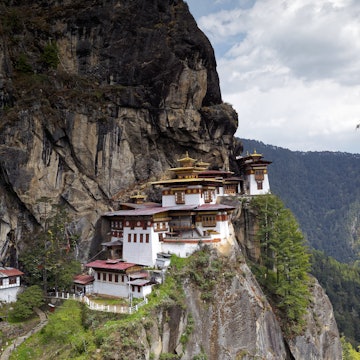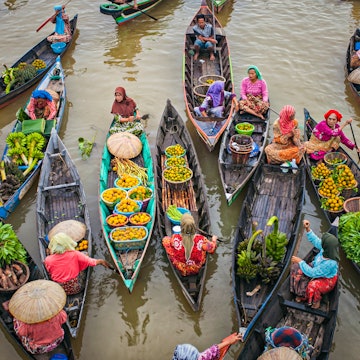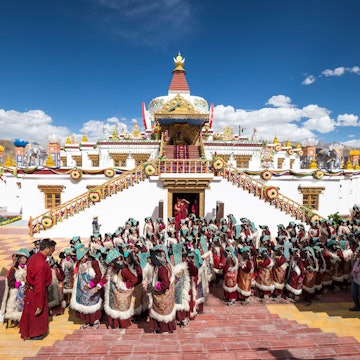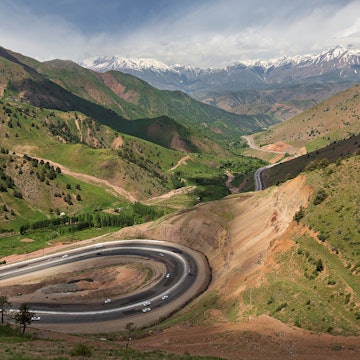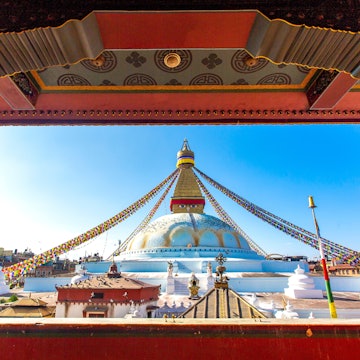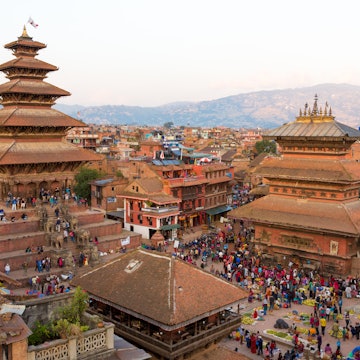

Some months are better than others for taking advantage of Bhutan’s amazing scenery – so plan accordingly. Sabine Hortebusch/Shutterstock
When is the perfect time to visit Bhutan? It depends on your reasons for traveling to this magical Himalayan kingdom.
Weather-wise, the best seasons for general travel are spring (March and April) and autumn (October and November). Which timeframe you pinpoint will depend on whether your main goal is trekking, avoiding the crowds or attending a specific festival. In general, October is the single most popular month for foreign visitors to Bhutan, closely followed by April.
You might find some hotel discounts in the off-season winter months of December to February and monsoon months of June to August. But in general, there’s not a huge seasonal price difference for tours. And any time you visit, you shouldn’t expect a budget getaway.
And the trip here is worth every penny. Here’s how to pick the perfect time to visit Bhutan.

October is the single best month to visit – unless you dislike crowds
With a perfect combination of comfortable temperatures, clear skies, spectacular festivals and good trekking, October is the single best month to visit Bhutan – which is why it’s the most popular month for international visitors.
Expect to encounter large groups at the more popular sights and throughout western Bhutan, as well as numerous trekking groups in camping areas. Yet if you stray just a bit from the well-established circuit, you’ll find plenty of spots you can enjoy by yourself. And even at its busiest time, the crowds in Bhutan don’t compare to those in neighboring Nepal or India.

Mid-March to May is the best time to see spectacular rhododendron blooms
Springtime in the eastern Himalaya brings not only delightful weather but entire hillsides of pink, red and white rhododendron blooms, as well as the dramatic spiky blossoms of Bhutan’s many red silk-cotton trees. In this timeframe, temperatures are warm but not hot – and while the skies may not be quite as clear as October or November, the fields are greener and snow still shrouds the higher peaks.
April is the second-most-popular month for foreign visitors, most of whom visit the beloved Paro Tsechu (masked dance) festival, usually in late March or early April. Early in the season is also a great time for day hiking sections of the low-altitude Trans Bhutan Trail; treks up to higher elevations are best left until late April and May.
April, May, October and November are the best months for trekking
The spring and autumn seasons are easily the best times to go trekking in the Bhutanese Himalaya. Spring brings colorful blooms but also more rain and mud than autumn, as well as more snow on the higher passes. Autumn offers clearer Himalayan panoramas and pleasant daytime high temperatures of around 20°C (68°F).
We don’t recommend setting out in the mountains during the June–to–mid-September monsoon season, when leeches, damaged roads and raging river crossings make trekking more of a survival adventure than fun. September is also a soggy, cloudy month. March is worth considering for lower-altitude treks such as the Saga La and Bumdrak routes.

November is the best month for spotting black-necked cranes
By early November, up to 600 black-necked cranes have established their winter home in Bhutan’s beautiful Phobjikha Valley, making it one of the best places in the world to spot these graceful, auspicious birds. While the cranes roost in the valley until March, November, before winter temperatures drop below freezing, offers the most comfortable viewing conditions.
Most of Bhutan is accessible during the winter months of November to February – save for the high mountain passes of the main trekking areas, which stay snowbound until late spring. There are very few tourists in winter and not much (if any) snow in the main valleys, making this a potentially lovely, quiet time to visit. Just be sure to pack plenty of warm layers.

February to March is the best time to beat the crowds
Since lower-lying areas such as the subtropical Punakha Valley and most of eastern Bhutan are already comfortably warm in February, this a great time to visit these regions. Still, winter snow still lingers in the higher, colder valleys of places like Phobjikha and Bumthang in central Bhutan. Head out to eastern Bhutan in February and you can enjoy the fabulous Chorten Kora festival, which attracts pilgrims from across eastern Bhutan and India’s Arunachal Pradesh.
The Punakha Drubchen Festival in late February is another of Bhutan’s most dramatic annual events, reaching a crescendo with the recreation of a 17th-century battle with Tibet featuring hundreds of costumed warriors. A three-day tsechu (masked dance festival) then follows.
July is the best time to spot alpine wildflowers
The monsoon months of June to mid-September are not the best time to visit Bhutan. Rain clouds block out the Himalayan peaks, the daily deluge plays havoc with mountain roads and domestic flights are frequently delayed. Still, there are a couple of upsides.
The high-altitude wildflowers in mountain valleys are at their peak, and this is the only time to spot the almost mythological blue poppy, as well as beautiful anemones, primula and irises. The eastern Himalaya, including Bhutan, receives more rainfall than anywhere else in the range, and boasts a much higher rate of biodiversity. The monsoon months also usher in wild-mushroom season, as well as summer festivals in little-visited places like the lovely Haa Valley.

Schedule your visit around Bhutan’s fabulous festivals
Whenever you visit, try to structure your itinerary around one of Bhutan’s spectacular and colorful religious festivals. Large crowds of Bhutanese attend these events, dressed in their finest traditional robes, and a motley crew of holy men and hucksters also set up shop. They’re true social highlights of the year for the country’s citizens.
Most festivals are scheduled according to the lunar calendar, with dates only confirmed by astrologers a year or so in advance. Check the website of Bhutan’s Department of Tourism and major tour operators for the latest dates.
The most popular of Bhutan’s many tsechus (masked dance festivals) are held in Paro and Thimphu in April and September respectively, and though they are spectacular affairs they do attract a lot of tourists.
Head out to smaller regional tsechus in places like Haa, Gasa, Mongar and Trongsa instead, and you’ll likely be the guest of honor as the only foreigner in town. The best of Bhutan’s secular festivals is October’s Royal Highland Festival in remote, mountainous Laya, which features horse races, traditional music and even yak beauty contests.









